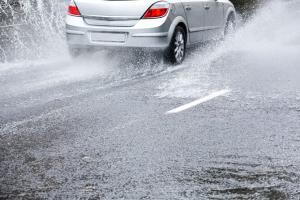Follow these five steps to protect your car from rainwater damage and ensure your safety as well as that of your vehicle

Doesn't a change of season call for a change in wardrobe? Well, while you monsoon-proof your closet and flaunt your colourful umbrellas and flip flops, it is equally essential to protect your four-wheeler from the rains. Whether you take your car for work regularly or use it once in a month for an outing, take necessary precautions beforehand to avoid damage or breakdown of the vehicle during this tricky season. Shubh Bansal, Co founder & Marketing Head, Truebil, lists down five steps to protect your car from rainwater damage and ensure your safety as well as that of your vehicle.
ADVERTISEMENT
Monitor the tyres: When your car’s tyres are not in a good condition, a thin layer of water is formed between the tyres and the road’s surface, reducing their grip on the road and making it difficult for the driver to control the car. Get the tyres inspected before monsoons, check their inflation pressure and monitor the tyres’ condition throughout the season to avoid car skidding, which can dangerous and even fatal.
Check the brakes: Car brakes should be in top-notch condition during the rainy season. Get the brake fluid checked and refilled regularly and make sure the brake line does not let in water or air that obstructs the flow of the brake fluid. Clean the brake pads and replace them if necessary.
Check the windscreen wipers: During the monsoon season, rains can obstruct the view and the driver may face difficulty in tracking the road. Wipers remove dirt and water droplets off the windscreen and offer a clear view ahead. However, the wiper blades tend to wear out rapidly due to constant exposure to different environmental conditions. Assess the condition of your windscreen wipers at varying speeds and replace them if required. Keep a wiper fluid handy to clean the windscreen if/when needed.
Conduct a battery check: Before the onset of monsoon, check the condition of your car battery and the rest of the electronic components of your car. Protect the battery effectively by applying a coat of petroleum jelly on its terminals. Likewise, check the condition of all fuses, and consider carrying backup fuses. You also need to insulate all external wires and check if the parking light and brake light are working perfectly while driving. It is important to patch up all loose and weak electrical connections to avoid a sudden breakdown in the rains.
Examine the headlights: Heavy downpour can cause poor visibility and hamper the proper functioning of headlights if there are cracks. Replace the headlights if they are broken before the rains, as water can easily seep in from the cracked parts and cause damage to the bulb and other electrical parts of the car.
Catch up on all the latest Crime, National, International and Hatke news here. Also download the new mid-day Android and iOS apps to get latest updates
 Subscribe today by clicking the link and stay updated with the latest news!" Click here!
Subscribe today by clicking the link and stay updated with the latest news!" Click here!






